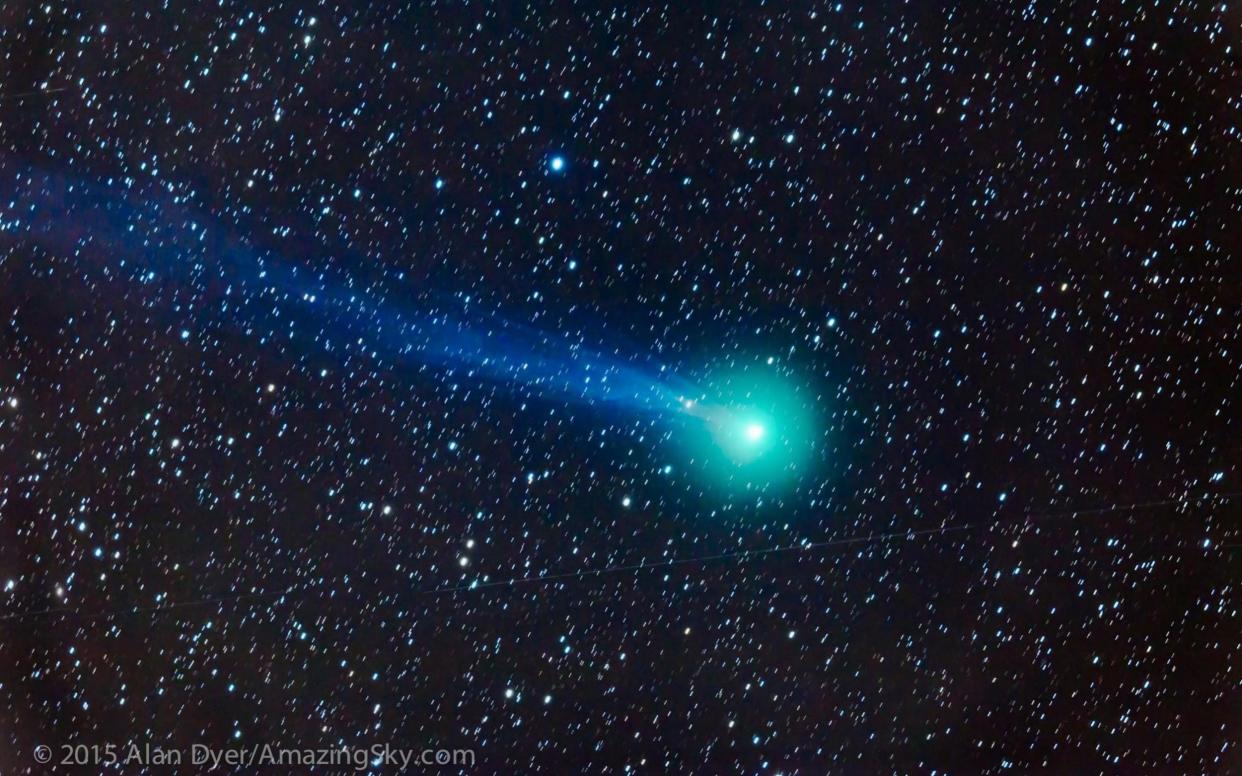Britain to build 'comet chaser' spacecraft to help find out how life formed on Earth

Britain is to build a “comet chaser” spacecraft to help find the origins of the universe and life on earth. The mission, to boldly go where no probe has gone before, will track and travel to an as-yet unidentified comet and map it in 3D for the first time.
Once in space the craft will lie in wait, potentially for years, until a cosmic candidate is spotted by astronomers on Earth.
From there it will set out to intercept it, deploying two smaller probes which will take readings and beam the data back to the main hub.
Though the process could only take a few hours, it is thought to shed light on the conditions in our universe more than four billion years ago.
The Telegraph understands that numerous countries applied to run the project and it is viewed by officials as a major coup for the UK scientific community.
Thales Alenia Space, a company with three sites in the UK and nearly 200 employees won the contract to design the mothership for the Comet Interceptor mission, with the two smaller probes made in Japan.
It is the first of the European Space Agency’s new class of “fast” missions where light equipment can hitchhike into space on an already scheduled launch.
This mission was originally proposed by a team led by UK academics from University College London and the University of Edinburgh.
Amanda Solloway, the science minister said: “The UK’s space industry is thriving and this out-of-this-world mission is testament to our world-leading expertise.
“I am very proud that scientists and engineers in Bristol and Harwell will be designing the Comet Interceptor spacecraft – their incredible work will not only further our understanding of the evolution of comets but help unlock the mysteries of the universe.”
Scientists are likely to target a comet from the Oort Cloud, a band of icy debris which lies between the sun and our next nearest star.
This cloud contains matter formed during the birth of our solar system, which will have been left intact as it has not been vaporised by rays from the sun.
This means that the probes will be able to study the composition of the comet to evaluate whether similar specimens may have brought water to Earth in the past.
Life on our planet could not exist without water, and it is thought by many that comets may have been responsible for bringing that water to our planet.
Andrew Stanniland, CEO of Thales Alenia Space in the UK said: “I am delighted ESA has once again placed its trust in our scientists and engineers at Thales Alenia Space in the UK who have excellent heritage from previous scientific missions such as Giotto and Rosetta.
“We all look forward to supporting this exciting and unprecedented scientific mission to uncover more information about the origins of our Universe.”

